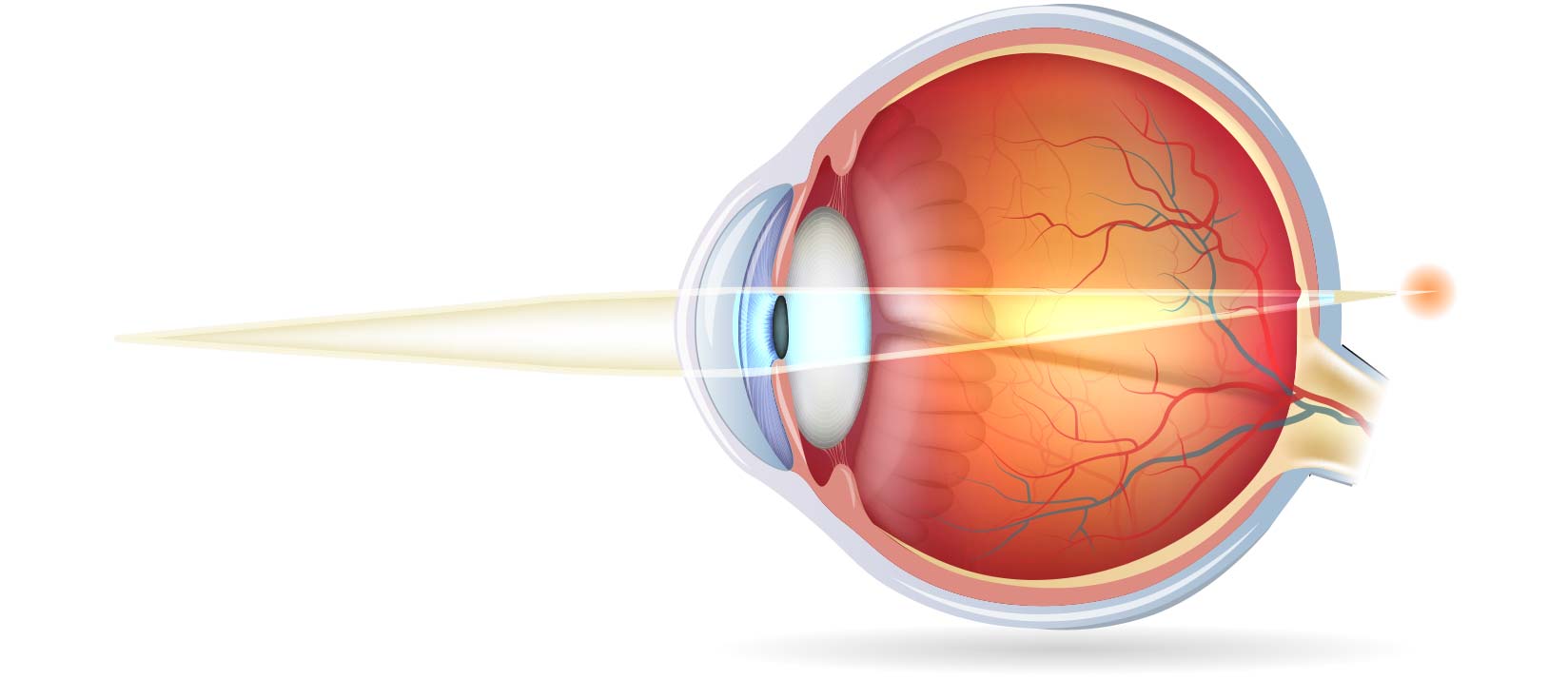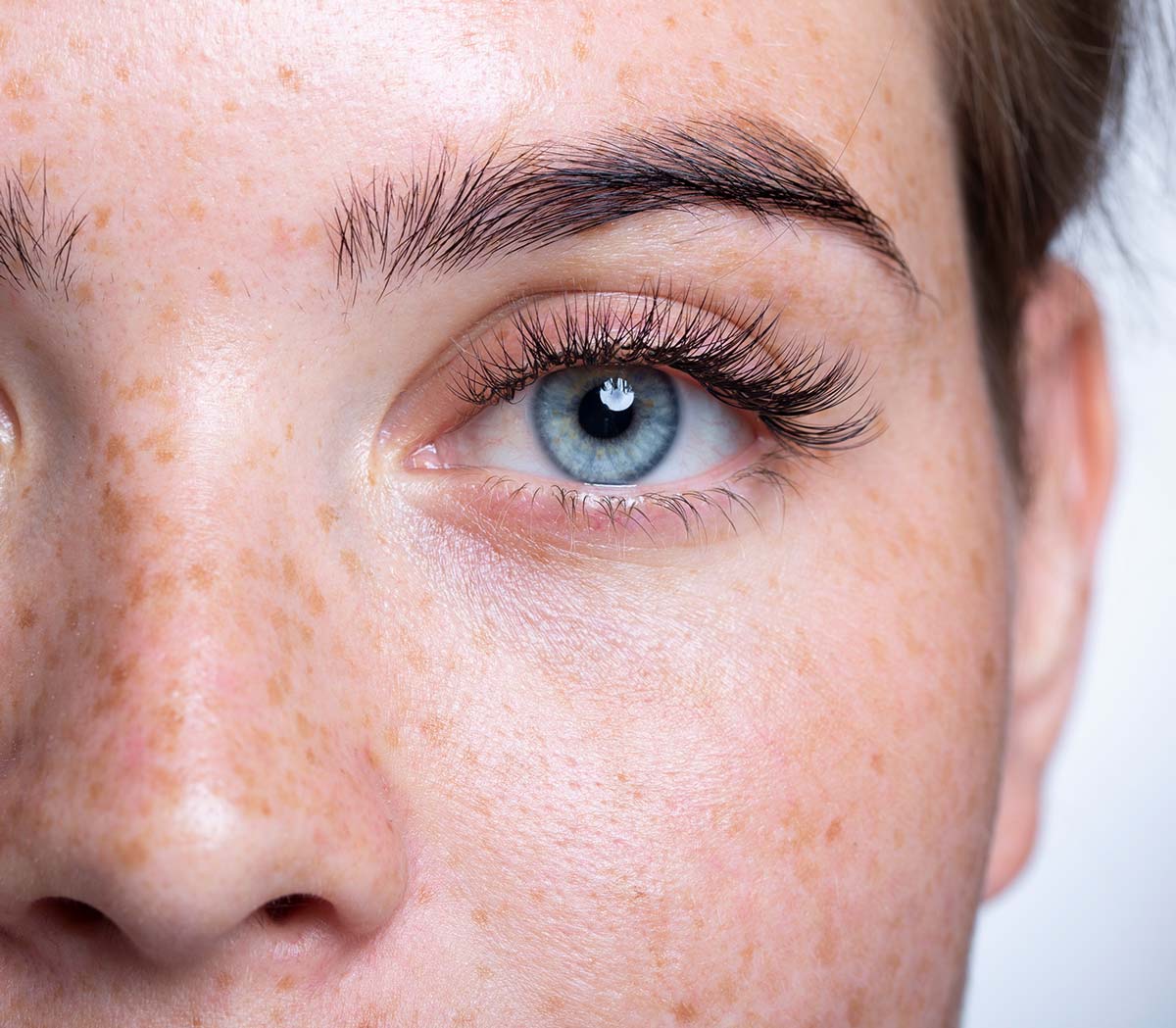
Myopia occurs when the cornea and lens focus light in front of the retina instead of right on it. The resulting image is blurry, and vision correction with glasses or contacts is necessary.
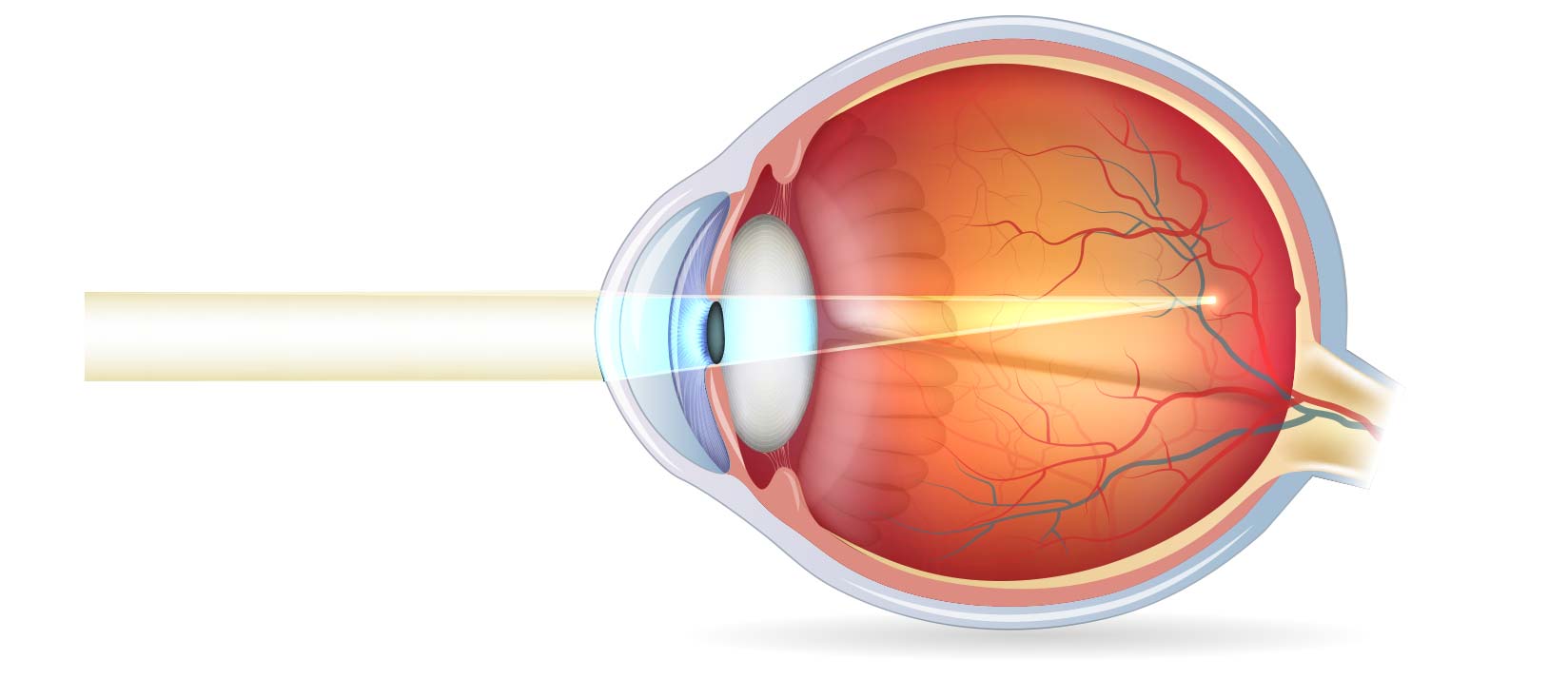
Once the exact prescription is determined, myopia can be corrected in a variety of ways including:
Hyperopia occurs when the cornea and lens focus light behind the retina instead of right on it. The resulting image is blurry, and vision correction with glasses or contacts is necessary.
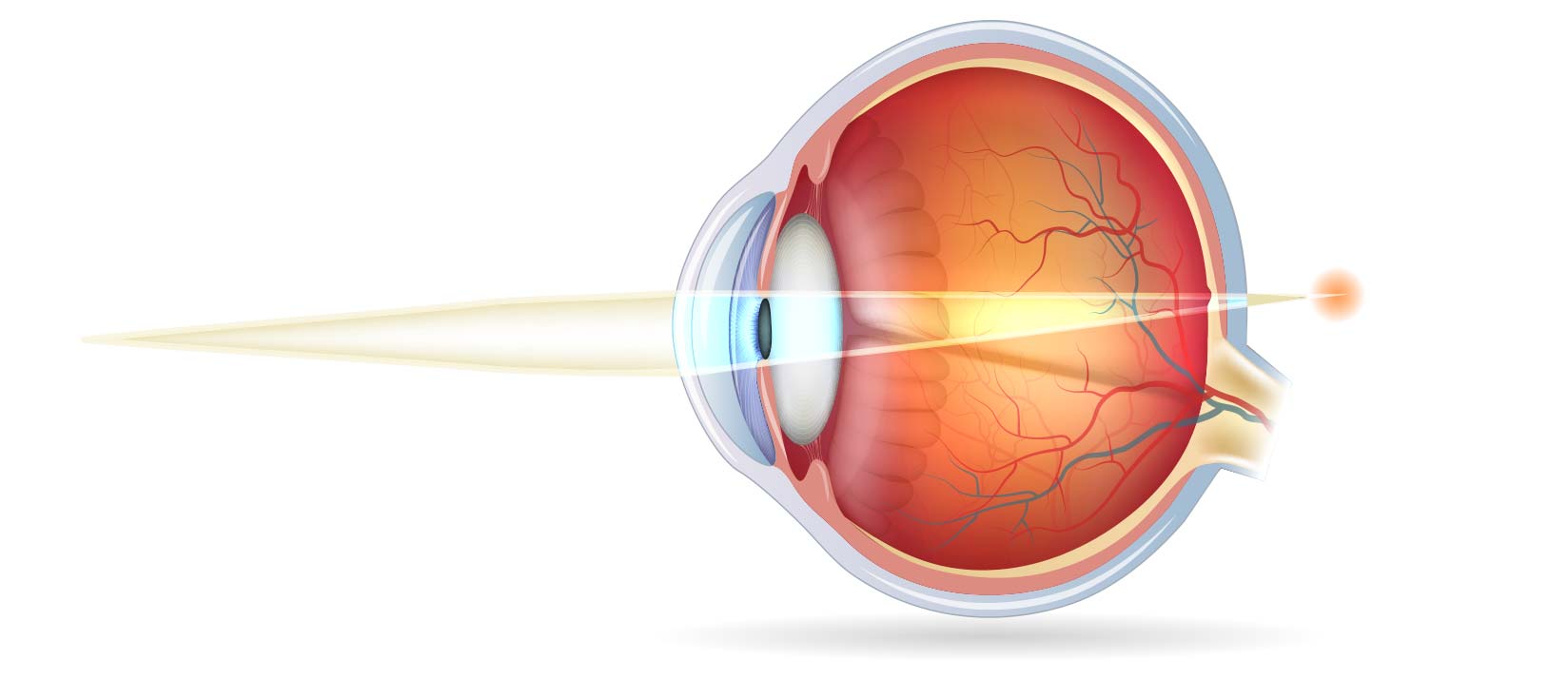
Astigmatism occurs when the cornea is more oval or football shaped instead of being a perfect sphere. The resulting vision is often blurry and distorted. Mild forms of astigmatism my not need correction, but the stronger the prescription gets, the more patients become dependent on glasses to see.
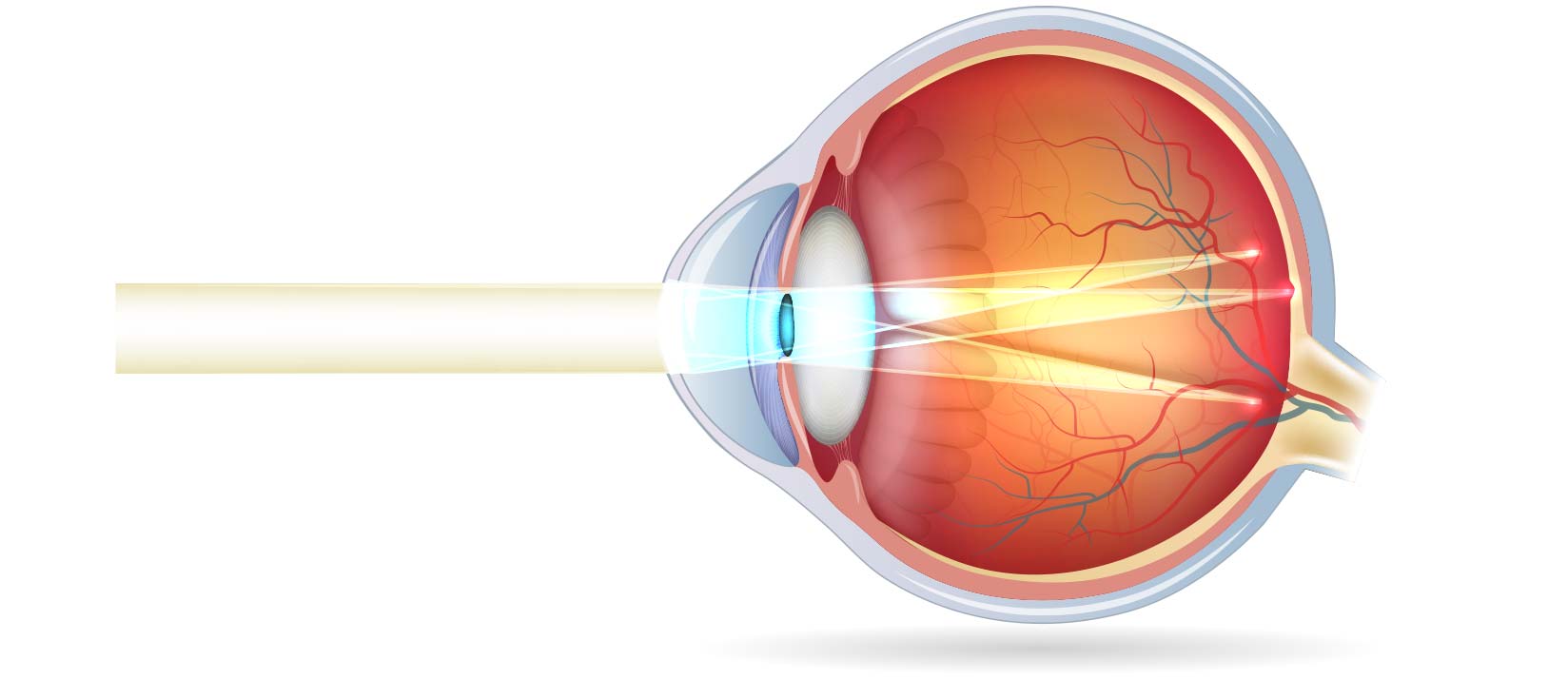
The human lens has a natural ability to change its shape or accommodate in order to focus on objects up close. In our 20’s and 30’s, we are able to accommodate without difficulty. Presbyopia occurs when the lens no longer has the ability to change shape, thereby requiring the use of reading glasses to compensate.
